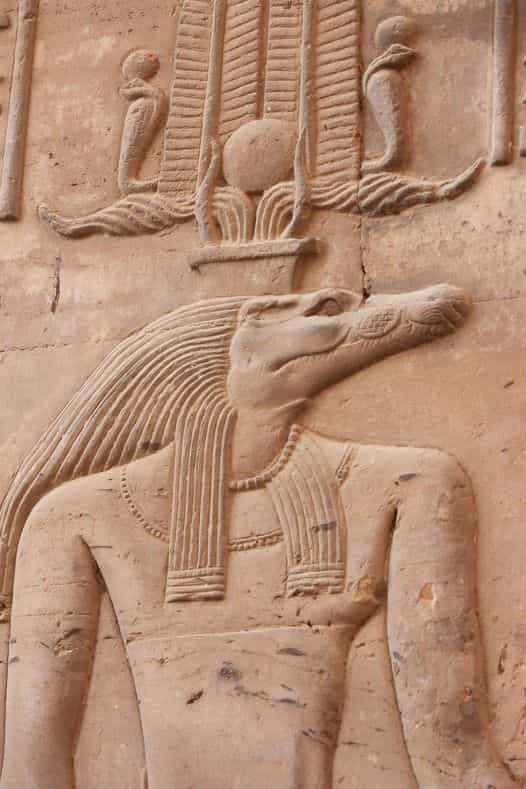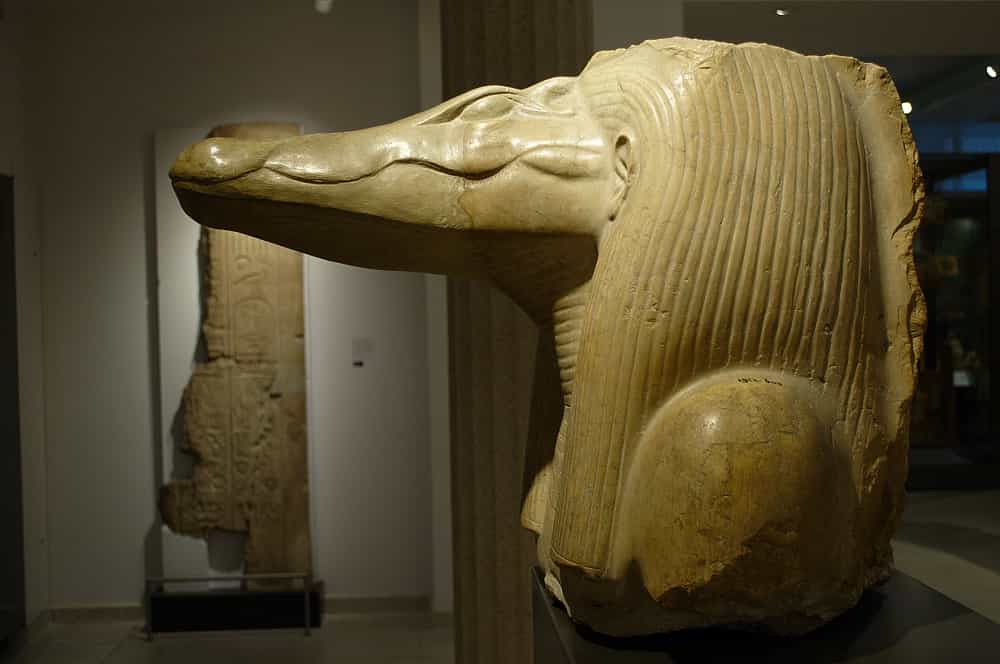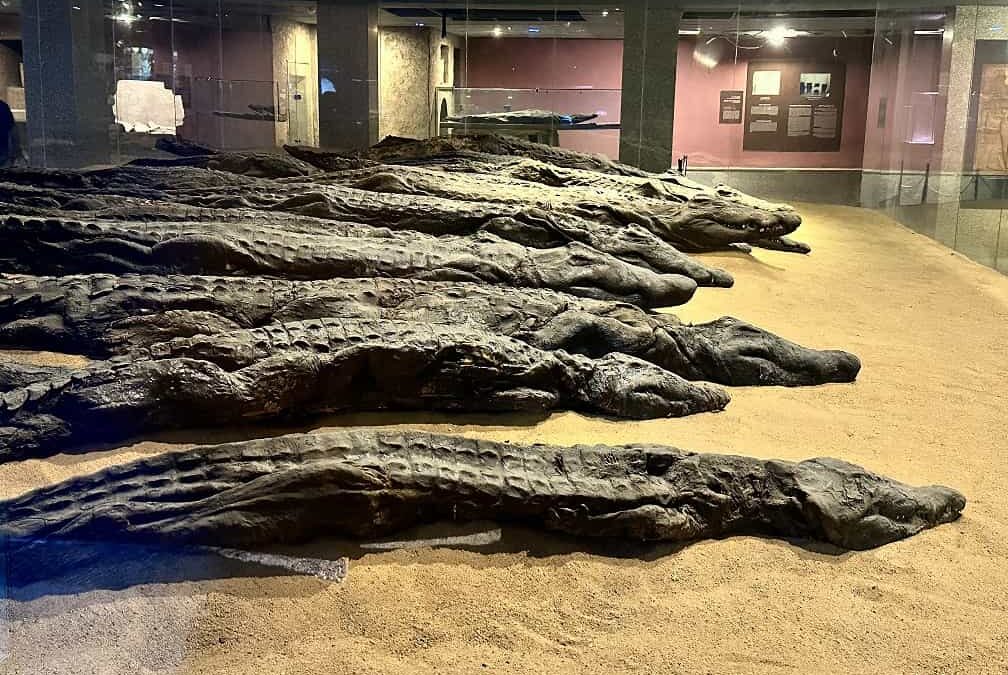Sobek was a prominent deity in ancient Egyptian religion, revered for his association with the crocodile, an animal both feared and respected in Egypt. Depictions of Sobek often portrayed him either as a full crocodile or as a hybrid figure with the body of a man and the head of a crocodile.
His fearsome nature was accentuated in some images, where even with a closed jaw, his sharp teeth were visible, hinting at his dangerous potential. Despite his fearsome appearance and titles like “the one who seizes husbands at will” or “the furious one,” Sobek was widely considered a protective and benevolent god.
The worship of Sobek endured from Egypt’s earliest days all the way through to the Greco-Roman era. He is mentioned in the ancient Pyramid Texts as the son of Neith, the goddess associated with the city of Sais.
Later, during the Ptolemaic period, Sobek became closely linked with Ra, the sun god, and was even identified with the Greek god Helios. However, his influence peaked during the Middle Kingdom, particularly in the Fayum region, an area abundant with crocodiles due to its natural environment.
While Sobek was strongly connected with the power of the sun—likely due to the observation that crocodiles bask in sunlight to recharge their energy—he was also a deity of fertility. He was believed to oversee the lush vegetation along the Nile’s banks, symbolizing the life-giving power of the river.
However, his most notable role was as a god of war, reflecting the crocodile’s agility and ferocity in water. Sobek, often called “Lord of the Waters,” was so integral to the natural world that it was said even the Nile itself flowed from his sweat.
Sobek: The Crocodile and Its Dual Symbolism
The crocodile, a creature both feared and dangerous, naturally carried negative symbolic meanings in ancient Egypt. This may explain why Sobek, the crocodile god, was at times portrayed as an ally of darker forces or even as an embodiment of Set, the god of chaos. However, despite this connection, Sobek also took on a protective role, especially in the Myth of Osiris.
In various episodes, Sobek ultimately sided with Horus, aiding him in his victory over Set. This aspect of Sobek as a defender of Horus reinforced his role as a protector of the monarchy, and many pharaohs incorporated his name into their royal cartouches or featured him in their official imagery as a divine supporter.
Crocodile worship was widespread in ancient Egypt, evidenced by the numerous crocodile mummies that have been unearthed. Temples dedicated to Sobek were often involved in breeding crocodiles, though these sacred animals were also sometimes hunted and mummified as votive offerings to the god. These mummies served primarily as tributes from worshippers, symbolizing their reverence and devotion.
Sobek was frequently worshipped in conjunction with other major deities, such as Amun and Osiris. However, his form as Sobek-Ra, which merged his identity with the sun god Ra, held particular significance. He was also associated with the North, and in some mythological stories, he was said to have a magnificent temple made of carnelian stone on the sacred mountain of Bakhu.
Sobek’s Sacred Sites and Worship
Sobek’s primary worship centers were concentrated in the Fayum oasis, a region rich with temples devoted to the crocodile god. Among these, the town known to the Greeks as Crocodilopolis was particularly prominent.
This area of Egypt also produced the Book of Fayum, a significant text from the Greco-Roman era that highlighted Sobek-Ra’s creative power. The text describes the god’s emergence from the waters of Lake Moeris, where he establishes order, banishes chaos, and embarks on an eternal journey across the sky to combat darkness and sustain life.
In addition to the Fayum, Sobek was also venerated in other locations, such as Kom Ombo, where a remarkable temple from the Greco-Roman period still stands.
What makes this temple unique is its double structure, dedicated to both Sobek and Haroeris, the falcon-headed god. Visitors can also explore a fascinating museum near the temple, dedicated to the crocodile and the rituals associated with its worship.








